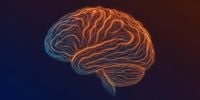Recent research published in Nature Communications sheds light on the intricate workings of the human brain during natural conversations. By utilizing a combination of intracranial brain recordings and advanced language models, scientists have discovered that the act of speaking and listening activates extensive brain areas, particularly in the frontal and temporal lobes. These findings indicate that the brain not only processes the words being communicated but also tracks the dynamic shifts between speaking and listening.
Historically, much of the research surrounding language processing has focused on isolated tasks, such as reading lists of words or repeating scripted sentences. While these studies have provided valuable insights, they fail to capture the fluid, interactive nature of real conversations. To address this gap, the authors of the new study employed a novel approach: they recorded brain activity from individuals engaged in spontaneous conversations and analyzed these signals using sophisticated natural language processing (NLP) models.
“It’s fascinating to delve into the neural basis of natural conversation, especially now,” said Jing Cai, an instructor in the Neurosurgery Department at Massachusetts General Hospital and one of the study's authors. “Studying the neural support for the potentially unlimited ways we produce and comprehend speech in natural conversation has long been a challenge. However, the recent advancements in natural language processing models have made it possible to directly investigate this neural activity. This feels like the right moment to leverage these powerful computational tools to unlock the neural secrets of how we communicate so fluidly.”
The research team studied 14 individuals undergoing clinical treatment for epilepsy. As part of their medical care, these patients had electrodes implanted in their brains to monitor seizures. With the participants' consent, researchers recorded brain activity during unscripted dialogues with an experimenter, discussing everyday topics such as movies and personal experiences. These conversations lasted up to 90 minutes and included over 86,000 words across all participants.
To analyze how the brain encoded these conversations, the researchers utilized a pre-trained artificial intelligence language model known as GPT-2, a type of NLP model. NLP is a branch of artificial intelligence focused on enabling computers to understand and process human language. GPT-2 transforms each word into a high-dimensional vector based on its context within a sentence, capturing complex features of language structure and meaning without relying on explicit linguistic rules.
The results indicated that both speaking and listening activated a widespread network of brain regions, particularly in the frontal and temporal lobes, which are traditionally associated with language processing. The neural signals observed were not merely general responses to speech but were closely aligned with the specific sequence and context of the words being used, regardless of whether the individual was speaking or listening.
PsyPost. “The extent to which these artificial systems captured nuances of language processing that were reflected in neural activity during live conversation was quite surprising. This opens up exciting possibilities for future research to leverage these artificial systems as tools to further decode the brain’s intrinsic dynamics during communication.”The researchers also conducted control experiments to confirm that the brain signals reflected meaningful language processing and not just sound or motor activity. In one condition, participants listened to and repeated scripted sentences, while in another, they spoke and heard pseudowords that mimicked English in rhythm and sound but had no real meaning. In both scenarios, the correspondence between brain activity and language model embeddings decreased significantly, indicating that the observed neural patterns were specific to real, meaningful communication.
Another key aspect of the study was the exploration of how the brain manages transitions between speaking and listening—an essential component of any conversation. By analyzing precise timing data, the researchers identified when participants switched roles. They found distinct patterns of brain activity during these transitions, with some areas increasing in activity before a person began speaking, while others changed when they started listening. Notably, many of these areas also tracked the specific language content of the conversation, suggesting that the brain integrates information about both what is said and who is saying it.
Across all participants, 13% of electrode sites exhibited significant changes in brain activity during transitions from listening to speaking, and 12% during the opposite shift. These patterns varied across frequency bands and brain regions, with differences being more pronounced at lower frequencies during the shift into listening. This suggests that the brain utilizes shared circuits to manage both content and conversational flow.
The researchers further examined how different types of brain activity correlated with various layers of the language model. Lower layers of the model represent individual words, while higher layers capture more complex, sentence-level meaning. The findings showed that brain activity during conversation aligned most strongly with the higher layers of the model, indicating that the brain is not merely reacting to individual words but is also tracking the broader structure and meaning of what is being said.
These findings were consistent across various models and participants. Whether the researchers employed GPT-2, BERT, or other models with different sizes and training methods, they consistently observed that brain activity reflected linguistic information. The percentage of neural sites showing correlations also increased with model complexity, reinforcing the notion that these models capture meaningful features of human language processing.
However, the study does have limitations. The participants were patients with epilepsy, and the placement of electrodes varied based on their clinical needs, which could affect the generalizability of the findings. Additionally, the models used were based on written text, not spoken language, meaning that prosody and tone were not captured. The researchers believe this is only the beginning, as future work could explore how acoustic features influence neural responses or even attempt to decode the meanings of thoughts from brain activity alone.
“Our work primarily serves as a demonstration of these differences rather than a deep dive into their fundamental mechanisms,” Cai stated. “We need future investigations to identify the specific linguistic and cognitive elements. The next step involves semantic decoding, moving beyond merely identifying which brain regions are active during conversation and decoding the meaning of the words and concepts being processed.”
As Cai concluded, “This is truly an exciting moment for neuroscience research in language. The combination of intracranial recording techniques and the rapid advancements in artificial intelligence modeling offers remarkable opportunities to unravel the brain’s mechanisms for communication, and to develop useful tools to restore communicative abilities for those with impaired speech.”





